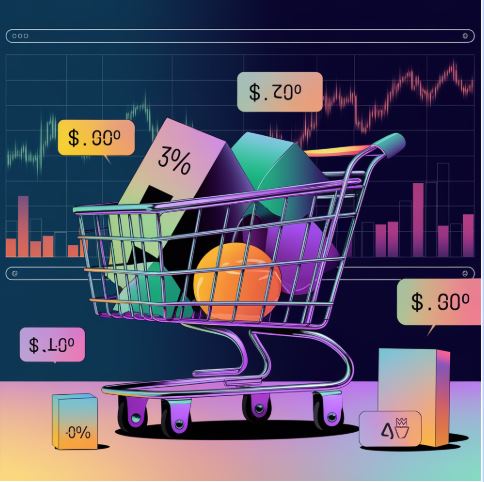E-commerce has revolutionized how people shop, giving rise to intense competition and fast-changing market trends. In this dynamic landscape, pricing strategies have become crucial for online stores aiming to thrive and grow. One approach that stands out is dynamic pricing—a method that uses data-driven tools to adjust prices in real-time or at defined intervals. This practice ensures that online stores remain competitive, profitable, and relevant in their respective markets.
What is dynamic pricing?
Dynamic pricing is a strategy where the price of a product or service changes based on various factors such as demand, competitor pricing, inventory levels, and market trends. It relies on advanced software that collects and analyzes data to suggest or implement price adjustments. This isn’t a new concept; airlines and hotels have used it for years. However, with advancements in technology, it has become an essential tool for e-commerce businesses looking to optimize their pricing strategies.
Unlike static pricing, where prices remain fixed for extended periods, dynamic pricing is flexible and responsive. It allows online stores to adapt to market conditions instantly, ensuring they never miss out on potential sales or revenue opportunities.
How dynamic pricing software works
Dynamic pricing software operates by gathering vast amounts of data from various sources. This data might include competitors’ prices, customer demand patterns, seasonal trends, and inventory levels. The software analyzes this information using algorithms and machine learning to recommend or automatically set optimal prices for products.
E-commerce merchants can define specific rules within the software, ensuring price changes align with their business goals. For instance, they can set minimum and maximum price thresholds to avoid underselling or overpricing. The automation offered by dynamic pricing tools reduces the manual effort of constant market monitoring, giving store owners more time to focus on other critical aspects of their operations.
Why dynamic pricing is vital for e-commerce
E-commerce thrives on agility. The ability to adapt quickly to changing market conditions can make or break an online store. Dynamic pricing provides that agility, offering several benefits that are hard to ignore:
Staying ahead of competitors
In today’s competitive online market, knowing what your competitors are charging is essential. Dynamic pricing software provides real-time insights into competitors’ prices, enabling you to adjust your own pricing strategy accordingly. By staying informed and responsive, you can attract more customers without engaging in unsustainable price wars.
Maximizing profitability
Pricing too high can deter customers, while pricing too low can eat into your profit margins. Dynamic pricing strikes a balance by ensuring your prices are competitive yet profitable. The software’s algorithms take into account factors like demand elasticity and competitor benchmarks to help you find the sweet spot.
Improving customer perception
Shoppers are increasingly price-savvy, often comparing prices across multiple platforms before making a purchase. With dynamic pricing, you can ensure your prices remain attractive, building trust and improving customer satisfaction. Fair and competitive pricing can lead to higher conversion rates and repeat purchases.
Adapting to market demand
Consumer demand fluctuates based on seasons, trends, and events. Dynamic pricing tools allow e-commerce stores to adjust prices in response to these changes seamlessly. For example, during peak shopping seasons, prices can be adjusted to reflect increased demand while still offering attractive deals.
Enhancing inventory management
Dynamic pricing isn’t just about competitiveness; it’s also a powerful inventory management tool. By adjusting prices based on stock levels, you can avoid overstocking or running out of popular items. For example, if an item is overstocked, the software might suggest a slight price reduction to boost sales and clear inventory.
How automation simplifies pricing strategies
One of the most significant advantages of dynamic pricing software is automation. Without such tools, monitoring competitors, tracking demand, and adjusting prices manually is time-consuming and prone to errors. Automation ensures accuracy and efficiency, letting you focus on other aspects of your online store.
You can set up rules within the software to define when and how prices should change. For instance, you might establish a rule to lower prices when a competitor drops theirs or increase prices when demand spikes. These rules ensure your pricing remains aligned with your goals, whether they’re focused on profitability, market share, or inventory management.
Challenges and solutions in dynamic pricing
While dynamic pricing offers immense benefits, implementing it can come with challenges. For example, frequent price changes might confuse or frustrate customers if not handled carefully. To address this, e-commerce stores can ensure price adjustments are incremental and accompanied by clear communication, such as highlighting limited-time offers or providing reasons for price changes.
Another challenge is the potential for price wars. Without well-defined pricing rules, e-commerce stores might find themselves constantly lowering prices to undercut competitors, leading to unsustainable margins. Dynamic pricing tools help mitigate this by ensuring price changes align with strategic goals rather than reactive tactics.
The future of dynamic pricing in e-commerce
As e-commerce continues to grow, the importance of dynamic pricing will only increase. Consumers are becoming more informed and demand transparency, making real-time price adjustments essential for meeting their expectations. Meanwhile, advances in artificial intelligence and machine learning are making dynamic pricing tools even more sophisticated, offering deeper insights and more precise pricing recommendations.
For modern online retailers, embracing dynamic pricing isn’t just a competitive advantage; it’s becoming a necessity. By leveraging this technology, e-commerce stores can remain agile, responsive, and profitable in an ever-changing market.


